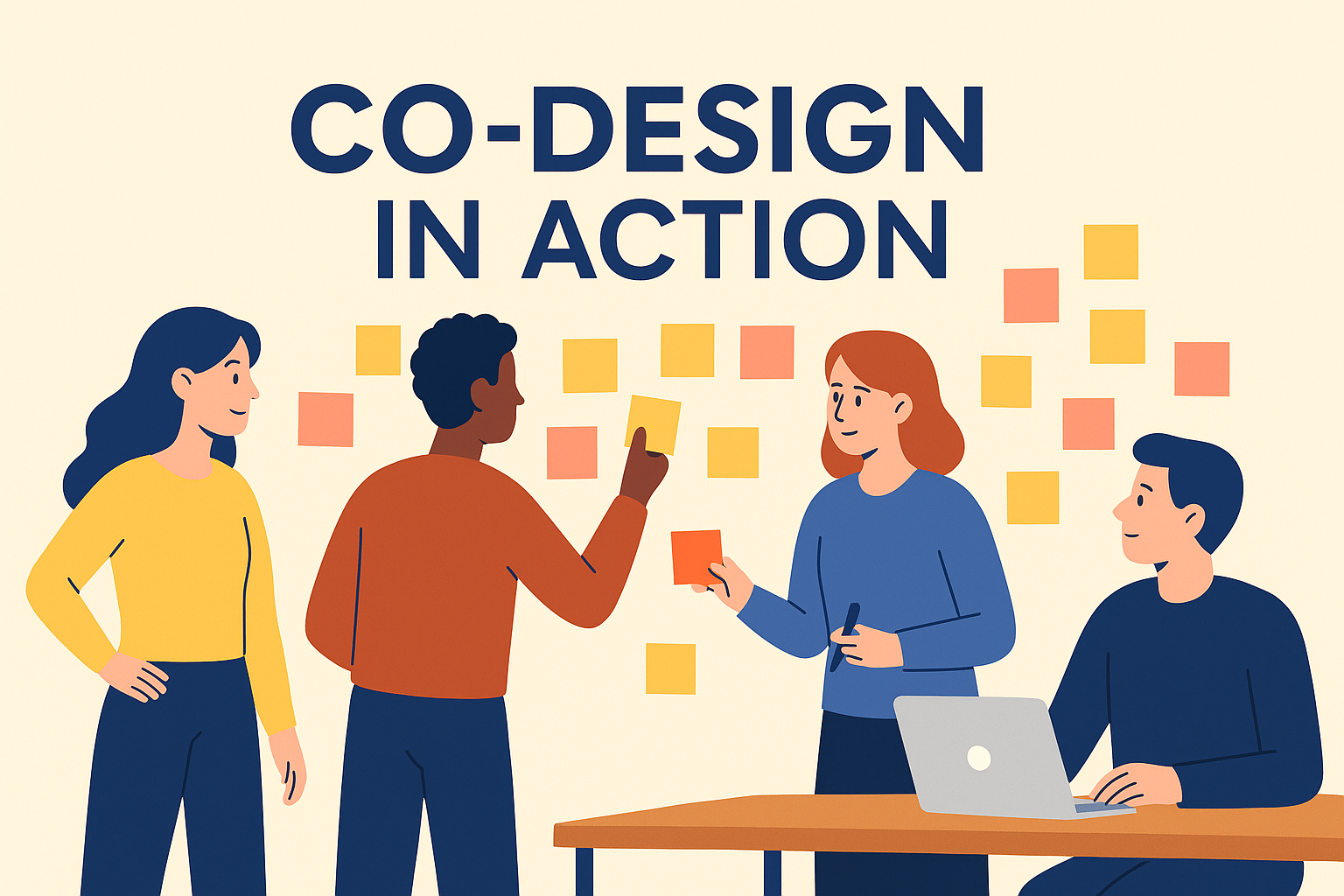Designing with, not for
Co-design is more than consultation — it’s collaboration.
It’s the difference between asking for opinions and sharing decisions.
In today’s world of digital transformation and public service reform, co-design reminds us that the people affected by a service should help design it. This approach shifts design from being expert-led to experience-led — guided by empathy, respect, and partnership.
What co-design means
Co-design brings together people with lived experience, subject matter experts, and decision-makers to design solutions as equals.
It’s built on five simple principles:
- Authentic voice – listen deeply to lived experience.
- Collaboration – design together, not in silos.
- Rights – empower people to influence outcomes that affect them.
- Respect – value all contributions equally.
- Resilience – build trust and relationships that last beyond a single project.
When done well, co-design leads to more inclusive, trusted, and sustainable outcomes.
Why co-design matters
Government and organisational projects often fail when solutions are created in isolation. Co-design changes that by:
- Building trust through genuine engagement
- Creating solutions people actually want and use
- Reducing rework and improving adoption rates
- Strengthening relationships across teams and communities
- Encouraging innovation through diverse perspectives
The mindset is simple: Nothing about us, without us.
The process in practice
A practical co-design process often follows four stages:
- Listen and learn – Gather insights from those directly affected.
- Sense and reflect – Explore what the information means together.
- Co-create and test – Prototype and refine ideas collaboratively.
- Act and evolve – Trial solutions, learn, and scale what works.
This mirrors human-centred and agile design principles — test early, learn fast, and iterate with feedback.
Asking powerful questions
Co-design relies on questions that open minds rather than close conversations.
Instead of asking “What’s the problem?”, try:
- “What would success look like for you?”
- “How can we build on what’s already working?”
- “What do you need to live and work well here?”
- “What would we do differently if we weren’t afraid to fail?”
Powerful questions help uncover what truly matters to people — and that’s where innovation begins.
Turning ideas into action
Great co-design doesn’t end in a workshop. It lives on in how teams work together, share power, and keep users at the centre.
To make it real:
- Create safe, inclusive spaces for participation
- Recognise and remove barriers early
- Share decision-making and accountability
- Value lived experience as equal expertise
When co-design becomes everyday practice, it transforms not only the outcomes — but also the relationships that make them possible.
My reflection
Co-design teaches us that the best ideas come when we listen without ego, design without assumption, and act with empathy.
Real transformation happens when we move from designing for to designing with.
